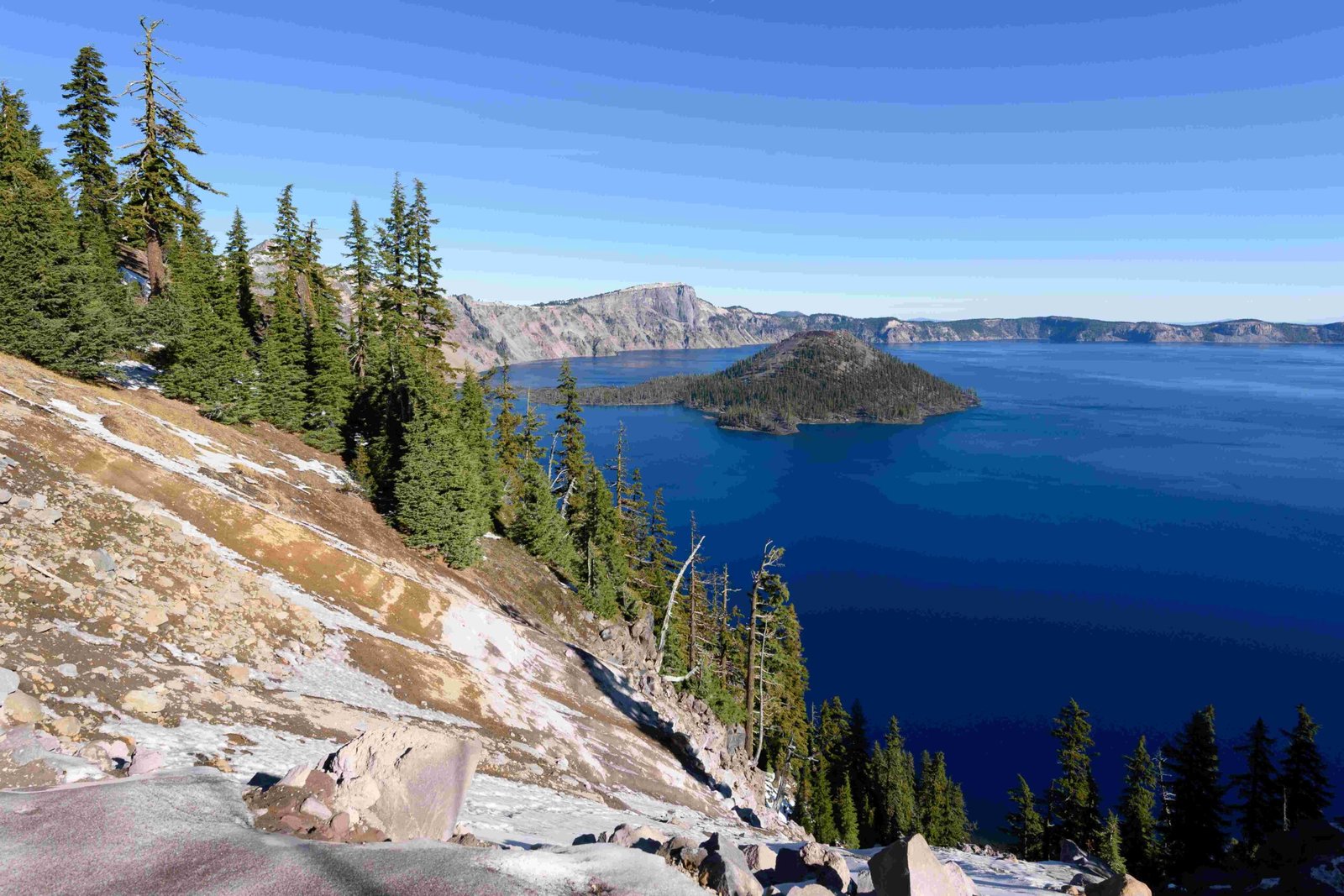Crater Lake, located in Oregon, is renowned for its exceptional depth and pristine blue waters. While it holds the title of the deepest lake in the United States, it’s not the deepest in North America. Crater Lake’s maximum depth is approximately 1,943 feet (594 meters), making it the second-deepest lake in North America. The deepest lake on the continent is Great Slave Lake in Canada, with a maximum depth of 2,014 feet (614 meters). However, Crater Lake does claim the title of the deepest lake in North America based on average depth.
Is Crater Lake’s Depth Truly Remarkable?

Crater Lake’s depth is indeed extraordinary, especially when considering its formation and characteristics:
- Maximum depth: 1,943 feet (594 meters)
- Average depth: 1,148 feet (350 meters)
- Caldera depth: 2,148 feet (655 meters)
These measurements place Crater Lake among the world’s deepest lakes, showcasing its geological significance.
How Does Crater Lake Compare to Other Deep Lakes in North America?

To understand Crater Lake’s ranking, let’s compare it with other deep lakes in North America:
| Lake Name | Location | Maximum Depth | Average Depth |
|---|---|---|---|
| Great Slave Lake | Canada | 2,014 ft (614 m) | 240 ft (73 m) |
| Crater Lake | USA | 1,943 ft (594 m) | 1,148 ft (350 m) |
| Lake Tahoe | USA | 1,645 ft (501 m) | 1,000 ft (305 m) |
| Great Bear Lake | Canada | 1,463 ft (446 m) | 236 ft (72 m) |
While Crater Lake ranks second in maximum depth, it surpasses all other North American lakes in average depth, making it the continent’s deepest lake by this measure.
What Factors Contribute to Crater Lake’s Impressive Depth?
Several geological and environmental factors contribute to Crater Lake’s remarkable depth:
- Volcanic origin: Formed by the collapse of Mount Mazama about 7,700 years ago.
- Caldera formation: The deep basin created by the volcano’s collapse.
- Lack of sediment: No incoming rivers to deposit sediment, maintaining its depth.
- Water source: Fed solely by rain and snowmelt, preserving its purity and depth.
How Was Crater Lake’s Depth Measured?
The process of measuring Crater Lake’s depth has evolved over time:
- 1886: First recorded measurement using piano wire
- 1959: USGS survey using echo sounding technology
- Modern methods: Multibeam sonar and GPS for precise measurements
These measurements have consistently confirmed Crater Lake’s exceptional depth.
What Unique Features Does Crater Lake’s Depth Create?
Crater Lake’s depth contributes to several unique characteristics:
- Exceptional water clarity: Visibility up to 100 feet (30 meters)
- Deep blue color: Result of water depth and purity
- Lack of aquatic plants: Due to the steep caldera walls
- Unique ecosystem: Adapted to the lake’s depth and isolation
Can Visitors Experience Crater Lake’s Depth?
While the full depth of Crater Lake isn’t accessible to visitors, there are several ways to appreciate its magnitude:
- Rim Drive: 33-mile road offering panoramic views
- Boat tours: Summer excursions on the lake’s surface
- Wizard Island: Cinder cone rising 763 feet above the lake’s surface
- Cleetwood Cove Trail: Only trail providing access to the lake shore
What Scientific Research is Conducted on Crater Lake’s Depth?
Ongoing research at Crater Lake includes:
- Water quality monitoring
- Geological studies of the caldera
- Climate change impact assessments
- Ecosystem and biodiversity research
These studies contribute to our understanding of deep lake systems and volcanic landscapes.
How Does Crater Lake’s Depth Affect Its Ecosystem?
The lake’s depth significantly influences its ecosystem:
- Limited nutrient cycling due to lack of turnover
- Specialized deep-water organisms
- Unique thermal stratification patterns
- Absence of fish species in deeper zones
What Are the Challenges in Preserving Crater Lake’s Depth and Purity?
Preserving Crater Lake faces several challenges:
- Climate change impacts on water levels
- Potential for invasive species introduction
- Managing increasing visitor numbers
- Balancing research needs with conservation
Park management strategies focus on addressing these challenges to maintain the lake’s pristine condition.
How Does Crater Lake’s Depth Contribute to Its Status as a National Park?
Crater Lake’s exceptional depth is a key factor in its designation as a National Park:
- Scientific value for geological and limnological research
- Educational opportunities about volcanic processes
- Scenic beauty attracting visitors worldwide
- Cultural significance to Native American tribes
The lake’s depth is central to its identity and importance as a natural wonder.
In conclusion, while Crater Lake is not the deepest lake in North America by maximum depth, it holds the title for average depth. Its exceptional characteristics, formed by its volcanic origin and maintained by its isolated location, make it a unique and valuable natural landmark worthy of its National Park status.

